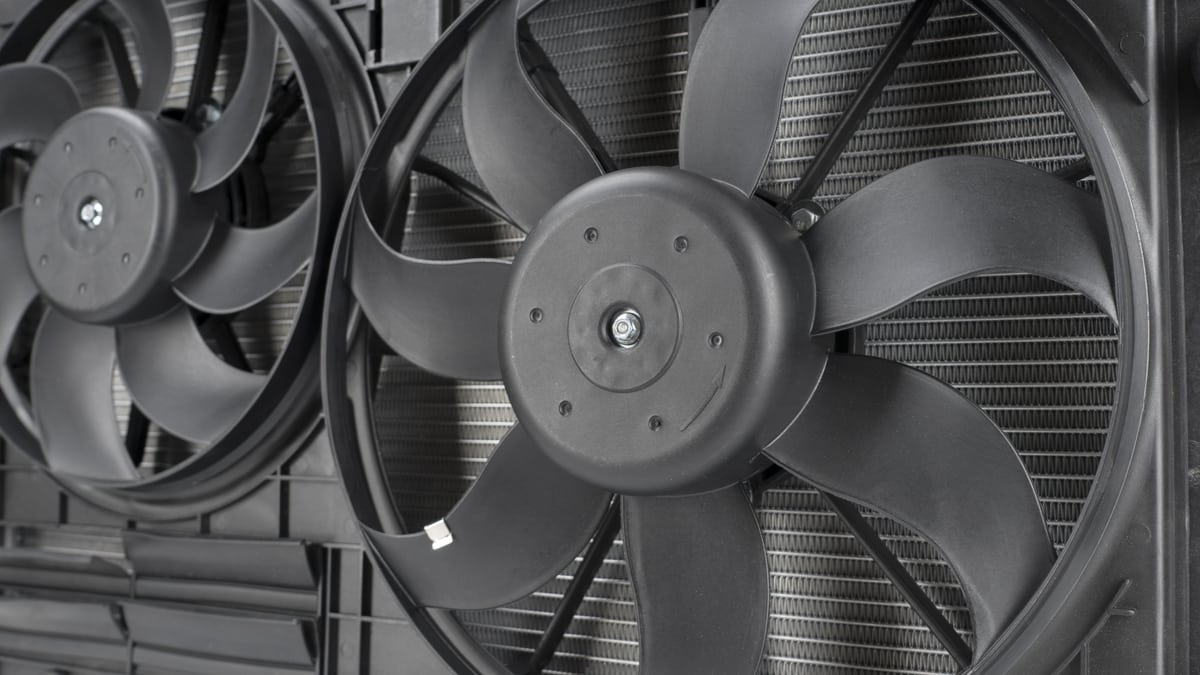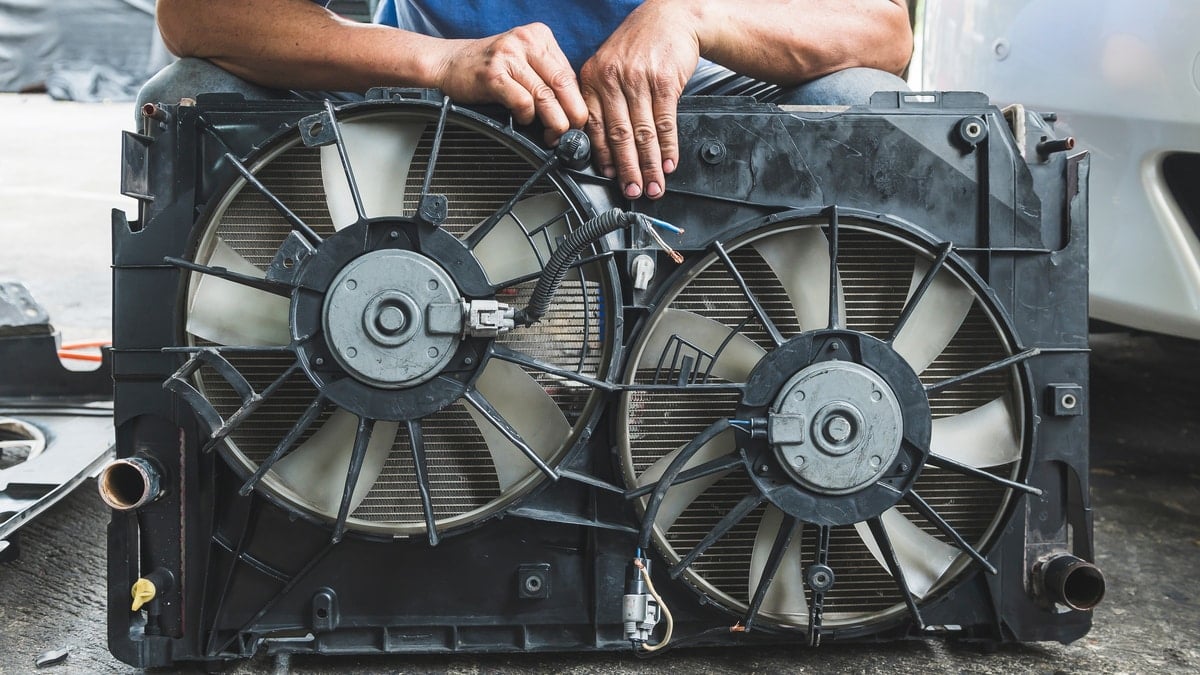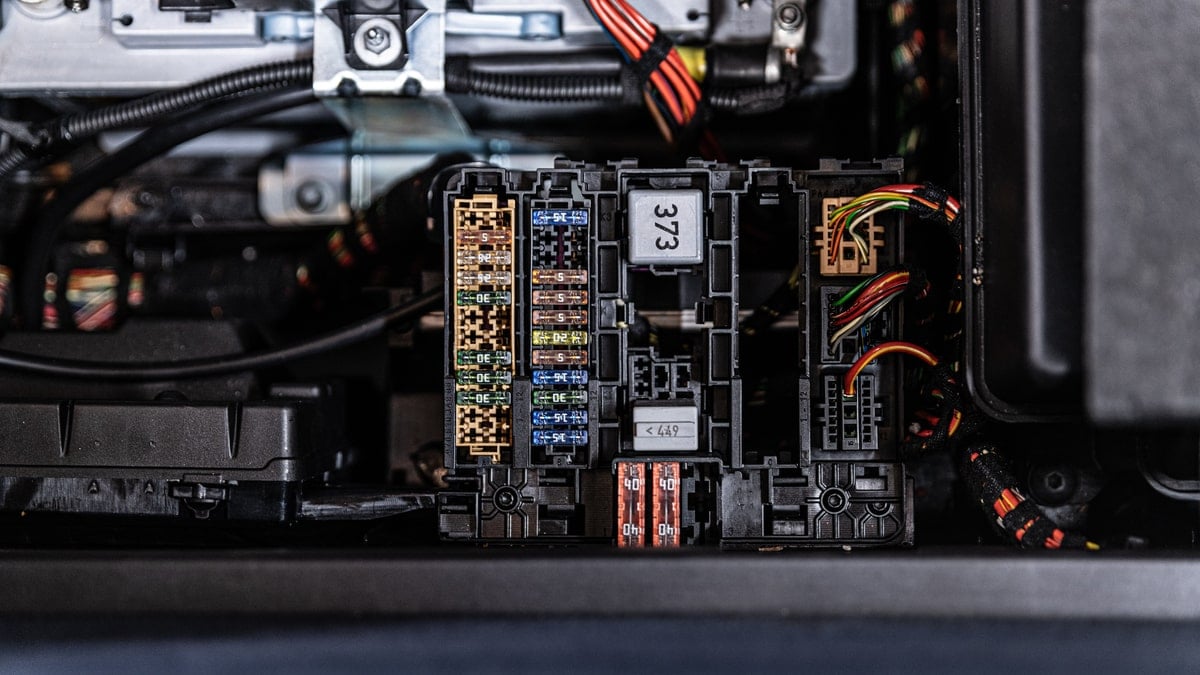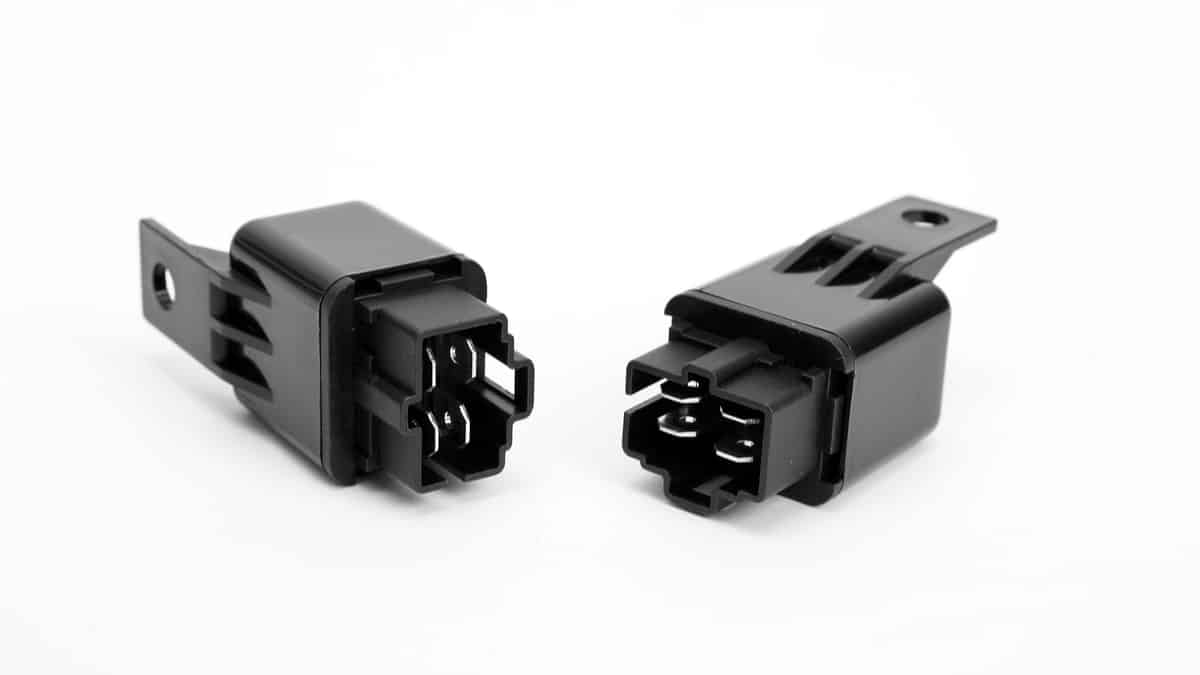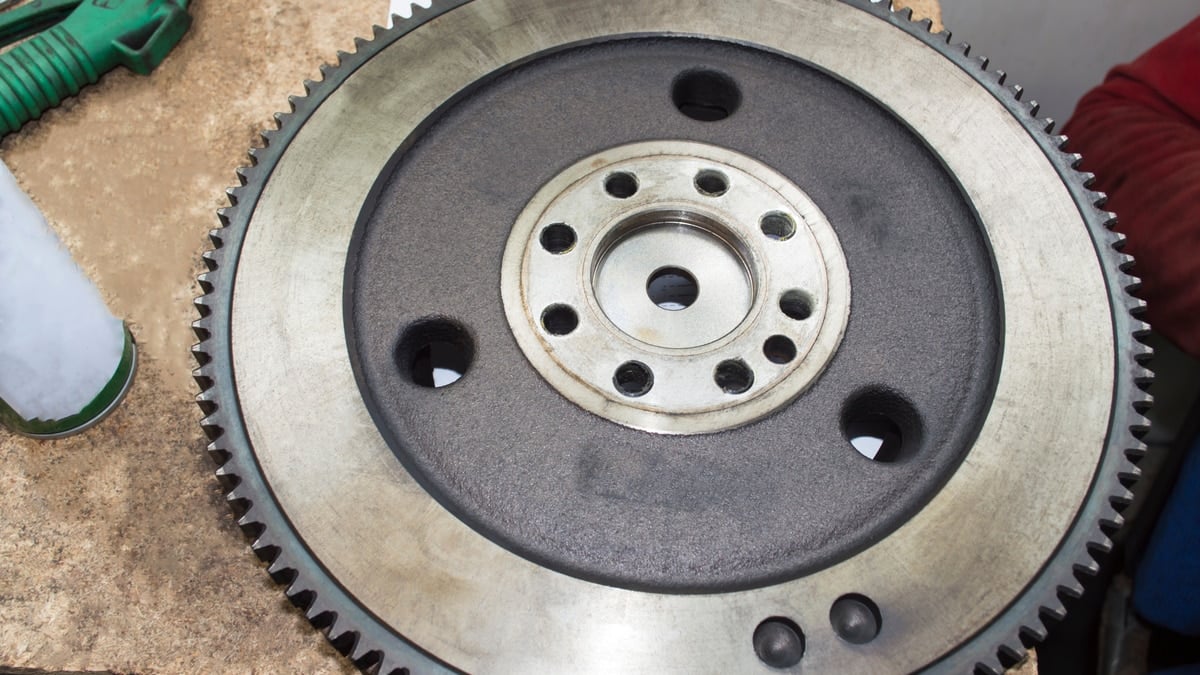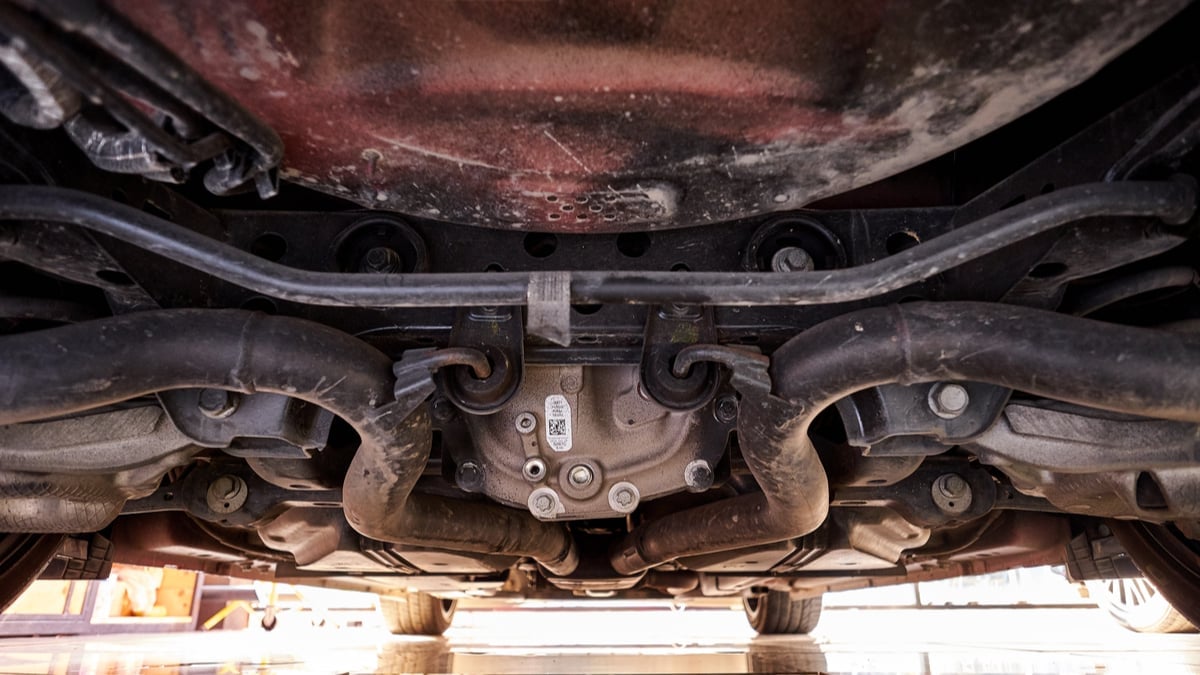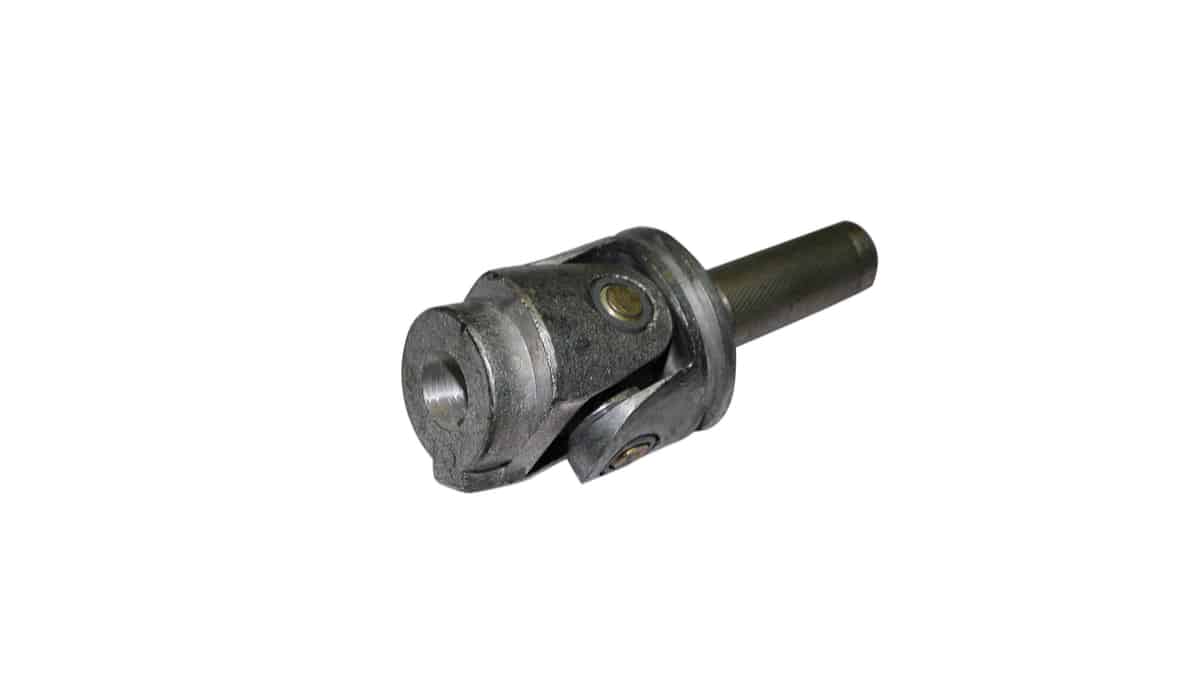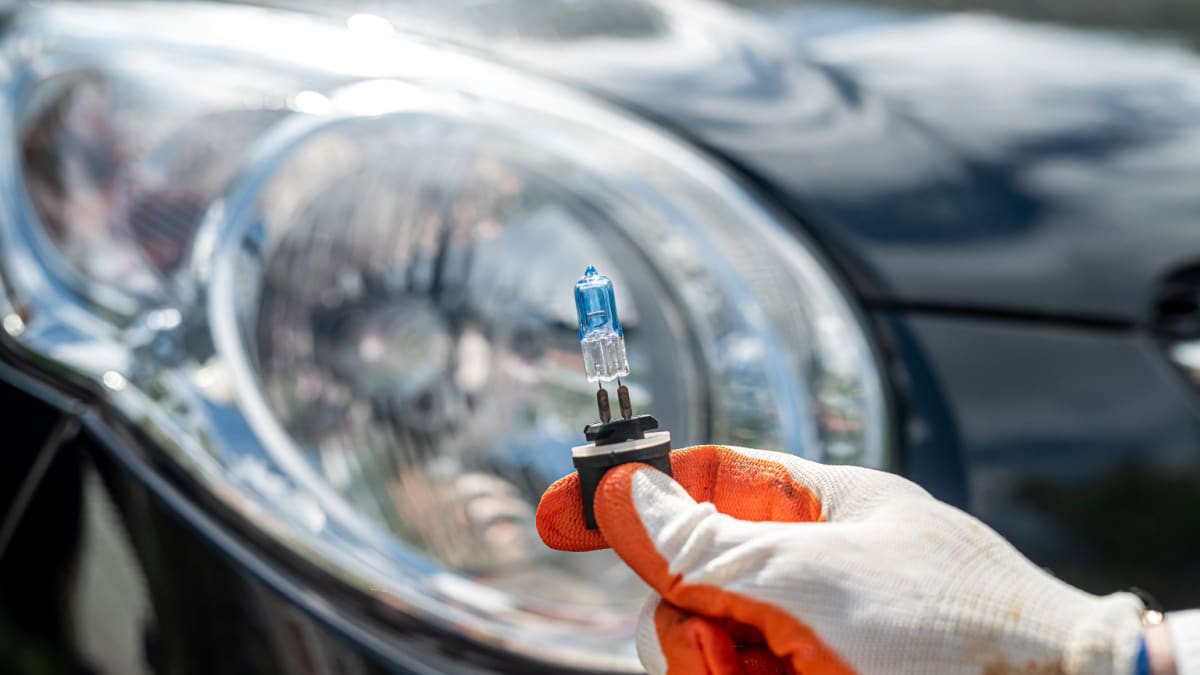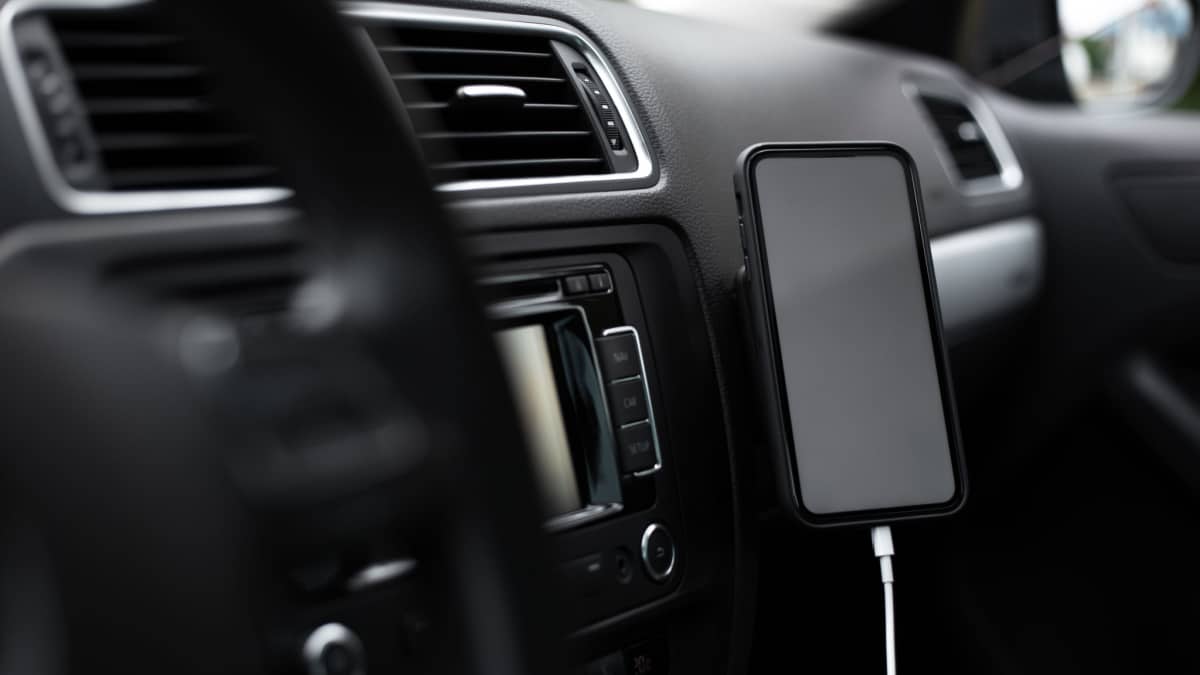The radiator fan is a very important part of your car, and you’ve probably heard it spinning and working hard many times after driving on a hot summer day.
But if something goes wrong with the radiator fan, it can cause expensive damage to your engine if you’re not careful. That’s why it’s extra important to fix your radiator fan as soon as possible if it’s not working.
In this blog post, we will explain seven probable causes for a malfunctioning radiator fan, as well as how to fix it. We hope that this information will help you get your car back on the road safely and quickly. Let’s go!
What Can Cause A Radiator Fan To Stop Working?
The most common causes of why a radiator fan is not working are a blown fuse, a bad relay, or a broken wire. It can also be caused by a faulty coolant temp sensor, low coolant level or the fan itself can be damaged.
While these are some of the reasons, the list is not exhaustive. Here is a more detailed list of the most common causes of a radiator fan not coming on:
1. Blown Fuse

A fuse handles almost everything electrical in a car. If there is an electrical surge going toward a piece of electronic equipment, the fuse cuts off the power supply to that particular piece of equipment and saves it from destruction. This is what we call a blown fuse.
A broken fuse is no big deal, and replacing one doesn’t cost a lot of money. If your car’s radiator fan is not working, check your car’s owner’s manual and find the fuse for the radiator fan controller or the fan.
The fan itself often uses a large fuse of around 50A, while there may also be a separate small fuse for the fan control module. Remember that if the fan fuse has blown – there may be a problem with the cables or the radiator fan. Read further down in the article for diagnosis.
2. Faulty Coolant Temperature Sensor
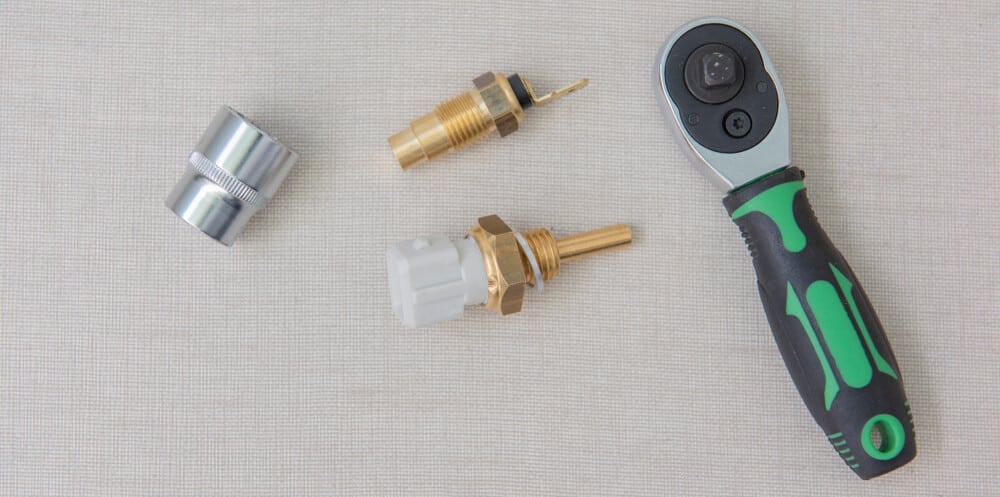
There are two types of systems in different car models. Either your fan control is integrated into the motor control unit, or you have a separate fan control module. In both cases, the controllers use a temperature sensor to know when to start the radiator fan.
If this coolant temperature sensor is broken and won’t show the correct engine temperature, the control unit or fan control unit will not know when to start the radiator fan. Some cars use separate engine coolant temperature sensors for the radiator fan and the engine control unit.
READ MORE: 8 Symptoms of a Bad Coolant Temp Sensor (& Replacement Cost)
3. Insufficient Coolant
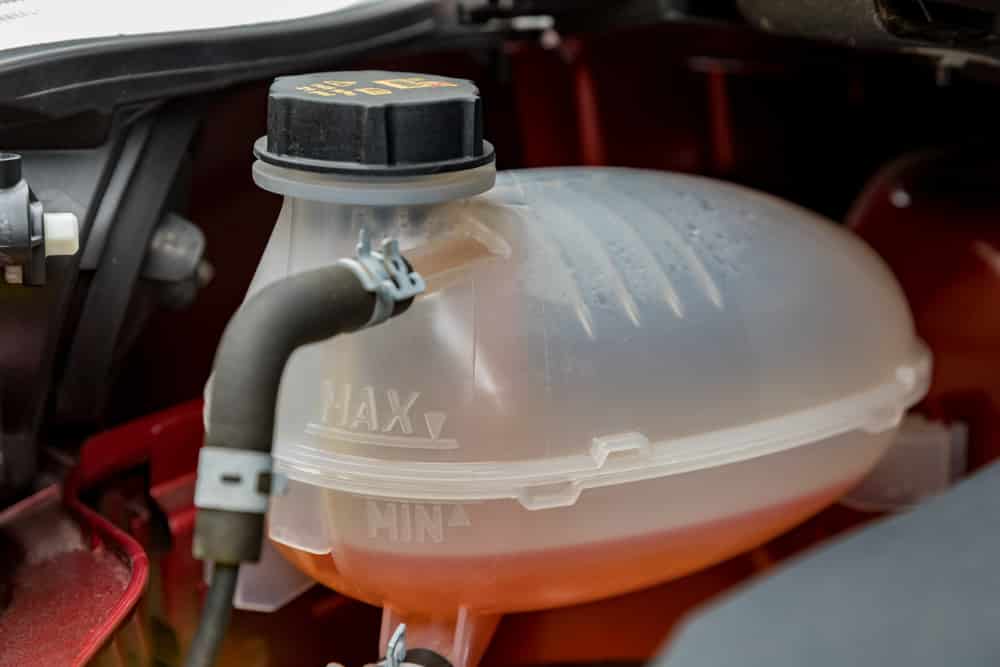
If your coolant level is low, there is a chance it is pushing air into the cooling system, and the coolant temperature sensor will not read the coolant temperature correctly. If the coolant level is low, you need to top up the coolant reservoir.
If you fail to do so, you could cause your engine to overheat, which could lead to a seized engine if you are unlucky. If your engine seizes due to overheating of coolant, it will destroy your engine and leave you with a very expensive repair cost, and is therefore something you want to be careful about.
RELATED: Low Engine Coolant Level? (Causes & Consequences)
4. Broken Radiator Fan
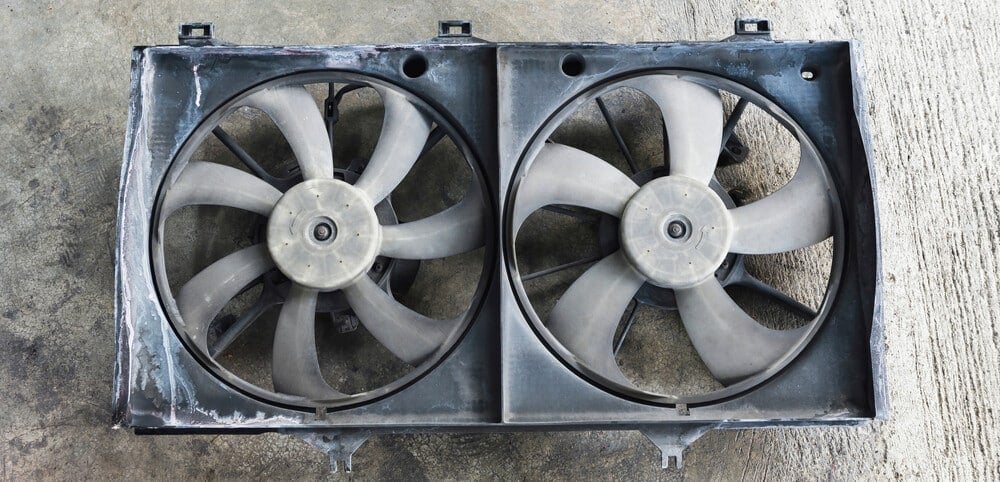
When your radiator fan is not working, it can actually be due to faulty radiator fans. The radiator fans have electric motors inside them that can wear out after a few years.
You can test the electric radiator fans by taking a lead from the car battery, unplugging the radiator fan connector and taking a fused 12v+ wire and ground wire into the connector. This is the fastest and easiest way to test your radiator fans. Be careful with your hands when the radiator fans start.
RELATED: 5 Symptoms of a Bad Radiator Fan (& Replacement Cost)
5. Faulty Fan Relay
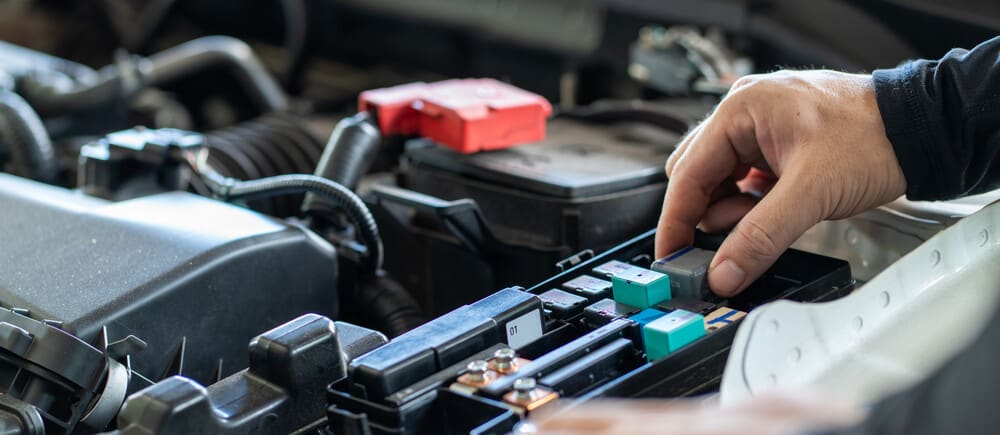
Because the radiator fan often draws so much current, there is a relay that powers the radiator fan. Of course, this relay can get damaged, causing the radiator fan not to start.
The fan relay is often located in the engine compartment fuse box, but the best way is to check your repair manual to find out where it is located.
Testing a 4-pin relay is often very simple. Remove the relay and supply 12 volts to pins 30 and 85. Ground pin 86 and check for voltage coming out of pin 87. It is even better to connect pin 87 to something that draws a lot of currents, like the radiator fan, for example.
READ MORE: How to Test an Automotive Relay at Home (5 Easy Steps)
6. Bad Fan Controller Module
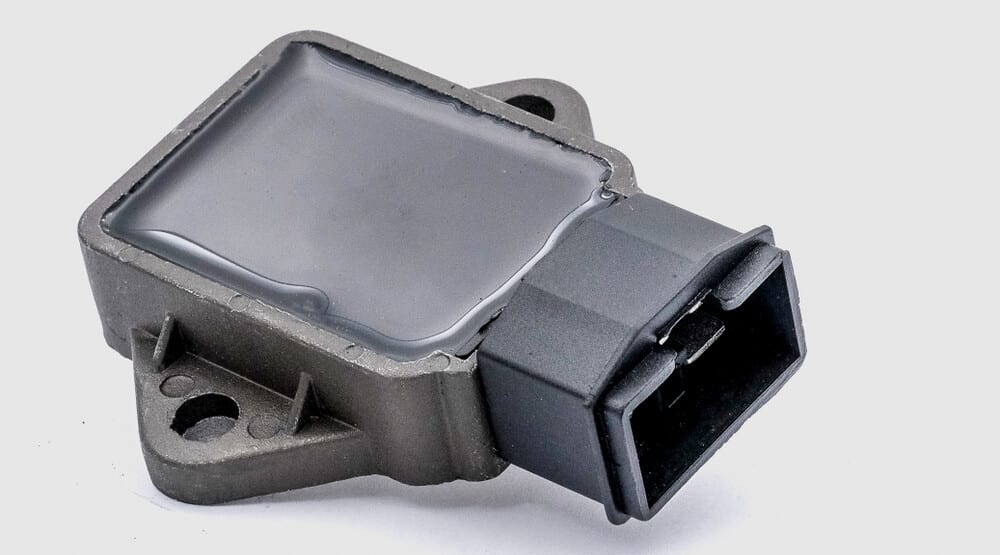
As discussed earlier, some cars have a separate control module specifically for the radiator fan control. This control module is often installed in the engine compartment, exposed to heat and dust. This can cause the control module to break after a while due to corrosion or other damage.
Locate the relay and check for any visual damage on the outside. You can often also open up the relay and check for any bad soldering or corrosion. Replace it if you see any problems.
7. Broken Wiring or Bad connection
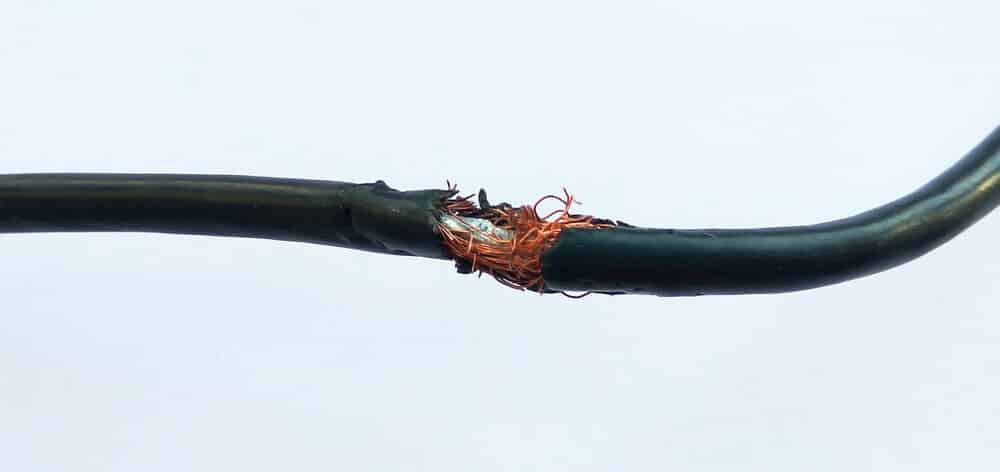
If the radiator fan does not work even though your car is overheating, there may be wiring issues or a bad connection. Check the wires going to the radiator fan from the controller or relay. Check the connection plugs for signs of corrosion. Also, check the contacts on the relay and the control unit.
Measuring the wires with a multimeter is often not very effective because you have to stress test the wires to see if they work. As a quick test, however, you can check with a multimeter if power is coming to the radiator fan.
How To Fix A Radiator Fan Not Coming On
To fix a radiator fan that won’t start, you should begin by checking the fuses. You also want to make sure the coolant level is good. Then, you need to read the error codes with a scanner and measure the wires with a multimeter.
Here is more detailed information on how to fix a radiator fan that won’t start:
1. Check Fuses
The first thing you want to do when your radiator fan is not spinning is to check and replace the fuses. There will be a large fuse for the fan itself that you want to check. It will be between 30 and 50 amps, and it is usually a larger fuse located in the engine compartment. But to find the exact location of your car model, you need to check your owner’s manual.
There will also be one or smaller fuses for the radiator fan control module or relay in most car models. To find these fuses, you must again check the instruction manual for the location. These fuses can also be located inside the car.
If you find a blown fuse, you may want to inspect the wiring and try to figure out why the fuse blew. However, sometimes a blown fuse may just be a temporary problem.
RELATED: 5 Signs of a Bad Car AC Condenser Fan (& Replacement Cost)
2. Check Coolant Level
The next step you want to do is to check the coolant level. If the coolant is low, it can cause many different problems with the radiator fan.
Checking the coolant level is easy, just open the hood and locate the coolant reservoir. You will see a max sign on the reservoir and sometimes a min sign as well. Make sure the engine is cold and open the container carefully. Fill the container with antifreeze up to the maximum mark.
3. Unplug Coolant Temperature Sensor
Another way to determine if the coolant temperature sensor is the problem is to disconnect the sensor. In most car models, the radiator fan should start when the coolant temp sensor is disconnected, and the car is running.
But for this, you need to find out which of the coolant temperature sensors controls the radiator fan, as there may be a separate one for the engine control module and the radiator fan control. Also, disconnecting the engine control module coolant temperature sensor may result in a check engine light on your dash.
4. Check Trouble Codes
Modern cars use very high technology. When there is a problem, you almost always want to read the trouble codes from the control modules before doing anything else.
This is also a good idea if your radiator fan is not working. This is because in many car models, the radiator fan is controlled by the engine control module, and if your fan is not working, you’ll want to check if the ECM knows what the problem is.
For example, if the engine control module stores a trouble code on the coolant temperature sensor, it can also cause the radiator fan to malfunction. To read the fault codes, you need to use an OBD2 scanner. You can either buy one to use at home or go to an auto repair shop so they can read the codes for you.
5. Measure wirings
If you’ve tried all the things above but still can’t figure out what’s causing the radiator fan to not start, it’s time to start with some more advanced diagnostics. To find out what is wrong now, you need to use a multimeter and measure the wires with a radiator fan wiring diagram for your vehicle. This can be quite difficult if you have no knowledge of vehicle diagnostics, and you may want to skip to the next step.
Using a multimeter, you must first measure the power and ground wire coming to the radiator fan. If you have both power and ground to the fan when it starts, you need to replace the radiator fan. If you are getting no power, you need to move on to diagnosing the fan relay and find out why it won’t activate.
You can then try to bridge the radiator fan relay, and if the radiator fan starts when you do that, you know there is a problem with the relay control, like a bad coolant temperature sensor for example.
6. Talk to a professional
Fixing car problems on modern car models can be quite difficult due to all the electronics and sometimes it can be good to have a professional take a look at the car instead. Many professional mechanics have thousands of hours of training in automotive diagnostics and can quickly find problems like this.
Therefore, it doesn’t necessarily have to be more expensive to get the help of a mechanic instead of making a bad diagnosis and replacing the wrong parts all the time.
How do I know if my radiator fan fuse is bad?
The easiest and most accurate way to know if the radiator fuse is bad is to measure it with a multimeter. But in many cases, you can visually inspect it to see if the fuse wire inside it is burnt or not.
What sensor controls the radiator fan?
A coolant temperature sensor controls the radiator fan. In some car models, there is a separate CTS sensor for the radiator fan, but in most modern vehicles it is controlled by the coolant temp sensor used by the engine control unit.
How do I manually turn on my radiator fan?
There are two ways to turn on the radiator fan. On modern vehicles, you can turn it on with a diagnostic computer. On older car models, you can turn it on by bridging the radiator fan relay.
How do you fix a fan relay?
If you have a bad fan relay, it is almost always better to simply buy a new fan relay. Fan relays are often quite cheap and if you try to repair your old relay, there is a high risk that you will have the same problem in the near future.
Can I drive a car if the radiator fan is not working?
No, it is not recommended to drive without the radiator fan working. This can cause the engine to overheat, which can lead to permanent and expensive engine damage.
What happens if the radiator fan is not working?
If the radiator fan is not working, your car can overheat when the car is idling or driving at lower speeds. At higher speeds, the cooling system will still be cooled by the wind. However, an overheated engine can cause serious damage to your engine, so you don’t want to take the risk.
The radiator fan system is quite simple even in modern car models, and is therefore quite easy to diagnose. Often, when you have a problem with your radiator fan, it’s just something as simple as a blown fuse, a bad coolant temp sensor, or a bad relay causing it.
So now that you know the most common reasons, it’s time to start diagnosing! I hope you enjoyed this article, and with this information, you should now be able to figure out what is causing your radiator fan problems.
Learn more:
- Car Diagnostic – How to Troubleshoot Car Problems (Guide)
- 5 Symptoms of a Bad or Clogged Radiator
- 6 Symptoms of a Bad Radiator Cap
Categories: Electric, Troubleshooting
